WINTER 2023 / 2024
¿Qué sueñas? A veces, que llego tarde.
***
Daniel Leber, Krystel Cárdenas, Laura Zuccaro, Manuel Brandazza.
Es / En
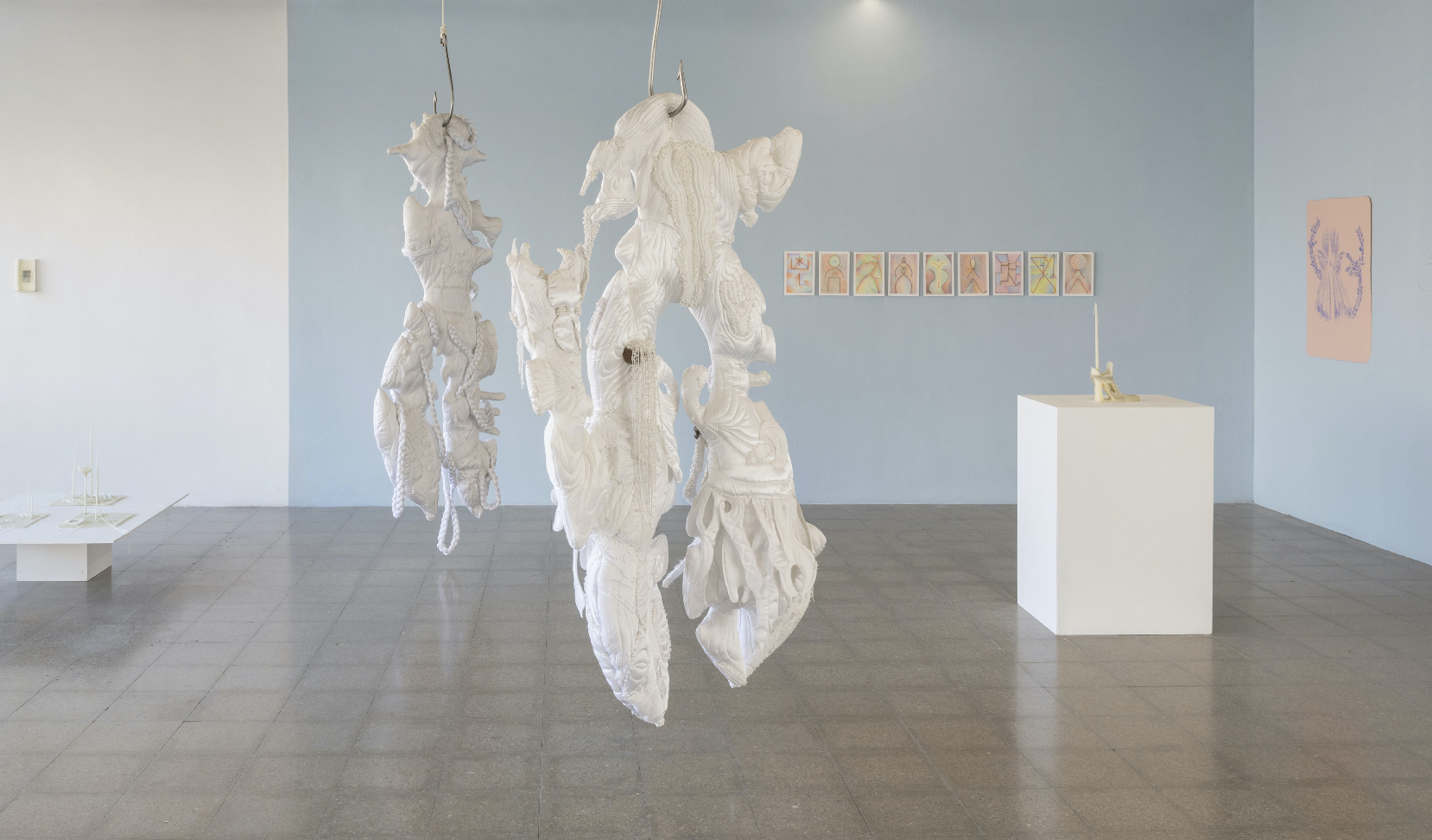
In a very large church that is still not finished, there are security controls like those in airports. A very expensive entrance fee is paid, and very strict rules are followed. It is a difficult place to explain.
The wind brushes the enormous towers that stand tall, and the necks of the visitors bend exaggeratedly to reach the highest points of the unfinished structure.
Drinking and eating are not allowed, and it is not possible to wear caps, hats, or bouquets. Widows must remove their black veils, shoulders cannot breathe, bodies must be covered, and nipples must be imperceptible. Rules that may seem simple become a daring challenge to enforce due to the daily crowd and the national diversity of those entering the premises.
Dress code is mandatory; nudity is not an option. “This is a church,” the employees repeat, not knowing exactly what they are saying. These diminutive minds have the inexpressible power of being filled with certainties; there is no doubt about either of the two ideas: this is a church, and one must be dressed.
Once, the guards had to escort two Slavic girls to the exit. They looked amused near the girls who emanated the scent of duty-free perfumes. Their dresses were green and tight; both dressed the same. More accurately, they were identical, resembling a fantasy movie cosplay of twins. The tight and green dresses were fluorescent green, shining like grass on cloudy days or like a highlighter in a studied text. The black, straight, and shining hair was like a liquid opal that reached the length of the dress to the edge of the buttocks.
They were expelled, poor things, and the church employees traveled the path of shame with their gaze, paying special attention to the support point of the high heels that forced the girls to bend their knees when descending the stairs. They were fascinating, like contemporary Mary Magdalenes.
Another day, a day like any other in the universal church, one of the employees stood in front of the main façade of
The wind brushes the enormous towers that stand tall, and the necks of the visitors bend exaggeratedly to reach the highest points of the unfinished structure.
Drinking and eating are not allowed, and it is not possible to wear caps, hats, or bouquets. Widows must remove their black veils, shoulders cannot breathe, bodies must be covered, and nipples must be imperceptible. Rules that may seem simple become a daring challenge to enforce due to the daily crowd and the national diversity of those entering the premises.
Dress code is mandatory; nudity is not an option. “This is a church,” the employees repeat, not knowing exactly what they are saying. These diminutive minds have the inexpressible power of being filled with certainties; there is no doubt about either of the two ideas: this is a church, and one must be dressed.
Once, the guards had to escort two Slavic girls to the exit. They looked amused near the girls who emanated the scent of duty-free perfumes. Their dresses were green and tight; both dressed the same. More accurately, they were identical, resembling a fantasy movie cosplay of twins. The tight and green dresses were fluorescent green, shining like grass on cloudy days or like a highlighter in a studied text. The black, straight, and shining hair was like a liquid opal that reached the length of the dress to the edge of the buttocks.
They were expelled, poor things, and the church employees traveled the path of shame with their gaze, paying special attention to the support point of the high heels that forced the girls to bend their knees when descending the stairs. They were fascinating, like contemporary Mary Magdalenes.
Another day, a day like any other in the universal church, one of the employees stood in front of the main façade of
the building. She supported her bones as best she could, although what held her the most was the gaze of her bosses who, in addition to demanding that she do nothing with her time (which already posed a great effort), forced her to maintain a correct posture. Hands on the sides, back and legs straight, and a smile that stiffened in the winter cold and melted in the summer heat.
In a moment of perplexity or hallucination, the girl noticed something strange in the general scene but did not have time to discern what. Right in front of her and facing her, a man with a bare torso flexed his raised arms, as bodybuilders do when judged by the jury, tensing the muscles, inflating them with all the air they don’t have inside.
Although the man’s face was directed at her, his smile and gaze were also, and it was evident that the focus of his attention was on his own back. Before the employee could realize the grammatical error - the bare torso - in the space, two security guards, one on each side, ran at false speed to stop the nudity of the happy man.
The employee could see through the figure of the man. Behind him, a very fair and blonde lady took a photo, squatting while a baby carriage served as a stabilizer to prevent her from losing balance. She was taking a photo of her husband’s back.
When the man was warned of his inappropriate behavior, the smile faded, the arms relaxed, and even with the bare torso, he made a turn that allowed the employee to see a huge tattoo covering his entire broad back.
The image engraved on the skin was a meticulous dissection in shades of gray and black of the first façade built of the universal church: the Nativity façade of the Basilica of the Sagrada Familia was reproduced identical to its original, like a living picture, like a brilliant painting, like a portrait of another reality, like a radical imitation.
The employee thought without words: “This is sacred.”
*
Text: Mayra Vom Brocke
In a moment of perplexity or hallucination, the girl noticed something strange in the general scene but did not have time to discern what. Right in front of her and facing her, a man with a bare torso flexed his raised arms, as bodybuilders do when judged by the jury, tensing the muscles, inflating them with all the air they don’t have inside.
Although the man’s face was directed at her, his smile and gaze were also, and it was evident that the focus of his attention was on his own back. Before the employee could realize the grammatical error - the bare torso - in the space, two security guards, one on each side, ran at false speed to stop the nudity of the happy man.
The employee could see through the figure of the man. Behind him, a very fair and blonde lady took a photo, squatting while a baby carriage served as a stabilizer to prevent her from losing balance. She was taking a photo of her husband’s back.
When the man was warned of his inappropriate behavior, the smile faded, the arms relaxed, and even with the bare torso, he made a turn that allowed the employee to see a huge tattoo covering his entire broad back.
The image engraved on the skin was a meticulous dissection in shades of gray and black of the first façade built of the universal church: the Nativity façade of the Basilica of the Sagrada Familia was reproduced identical to its original, like a living picture, like a brilliant painting, like a portrait of another reality, like a radical imitation.
The employee thought without words: “This is sacred.”
*
Text: Mayra Vom Brocke


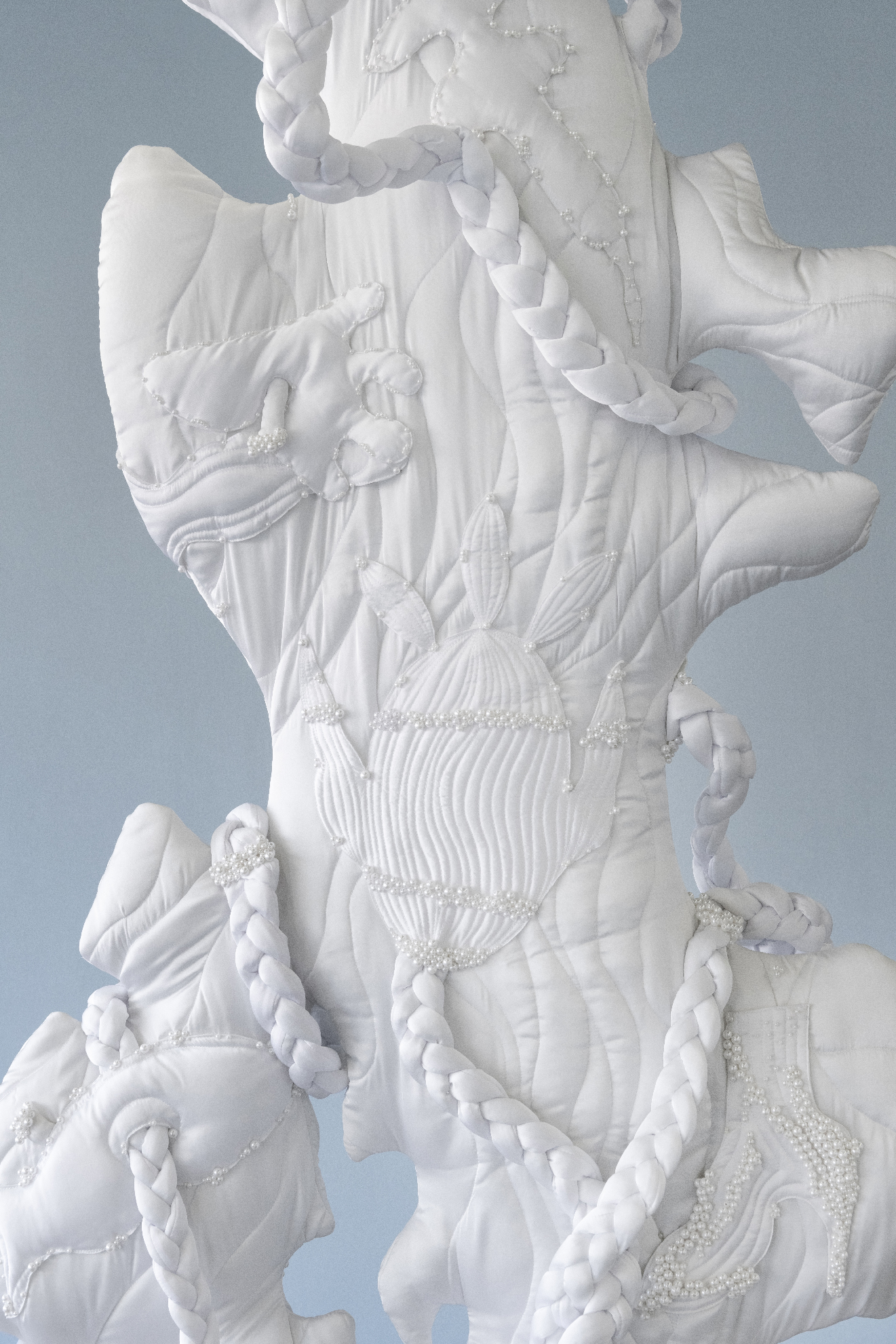


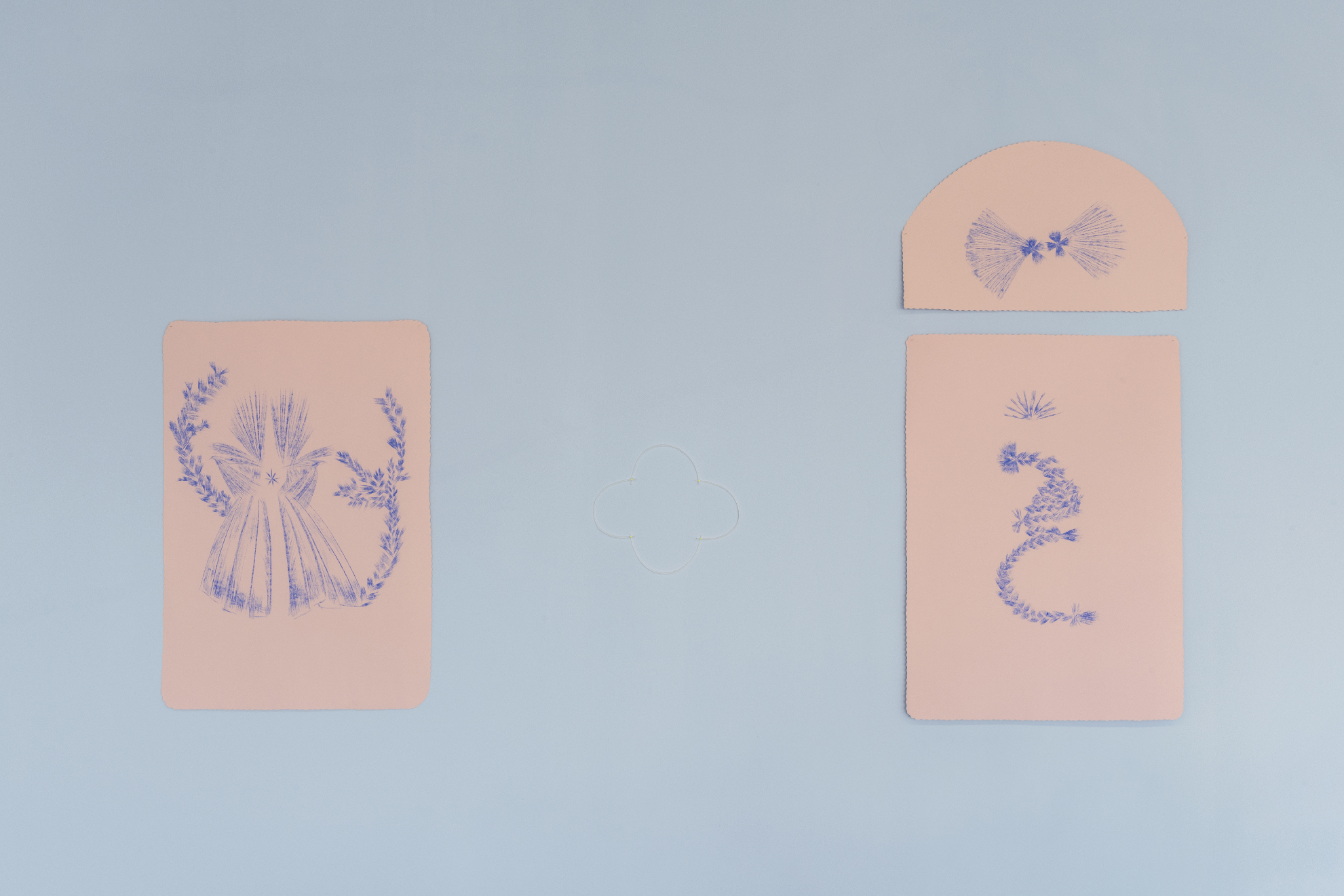




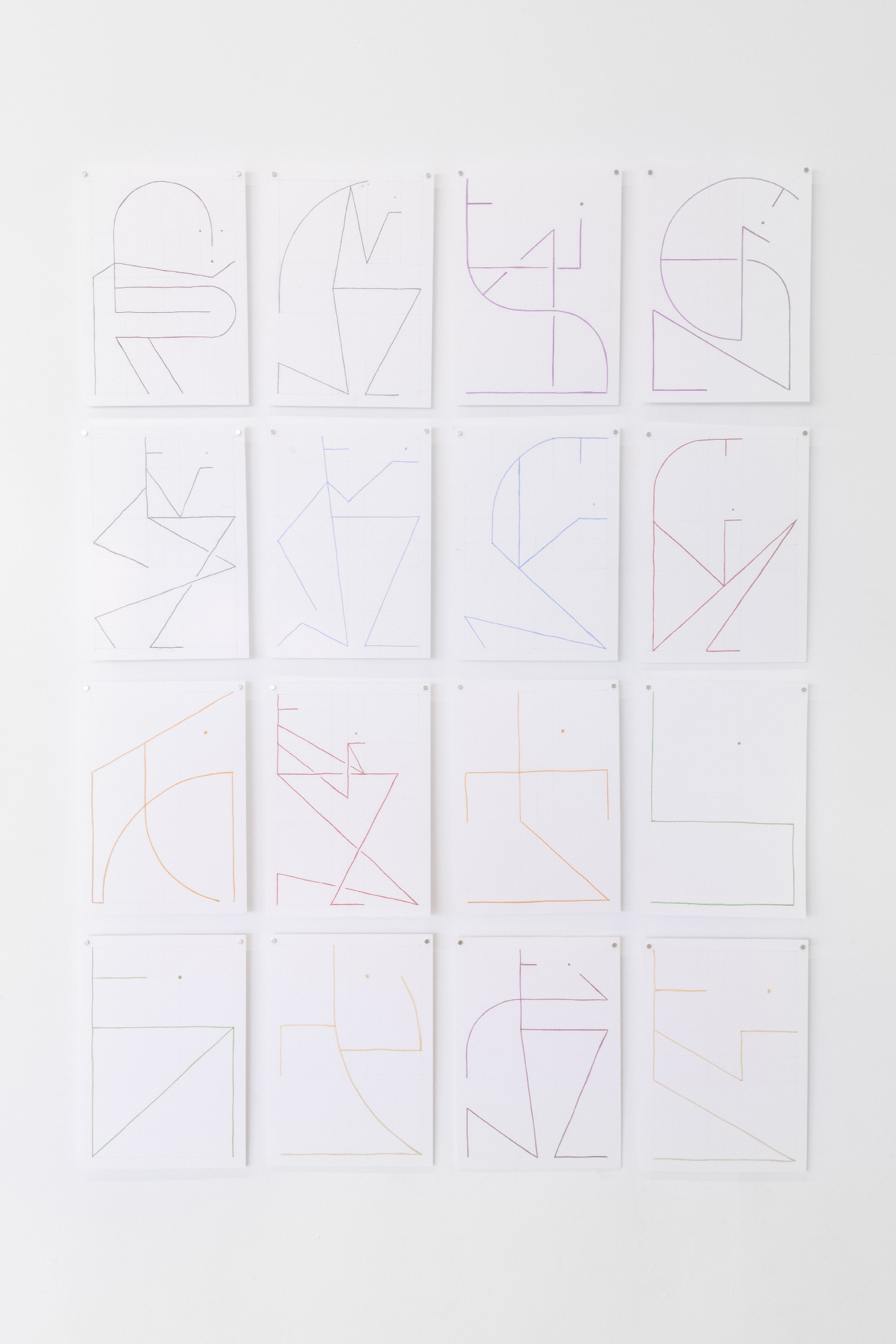


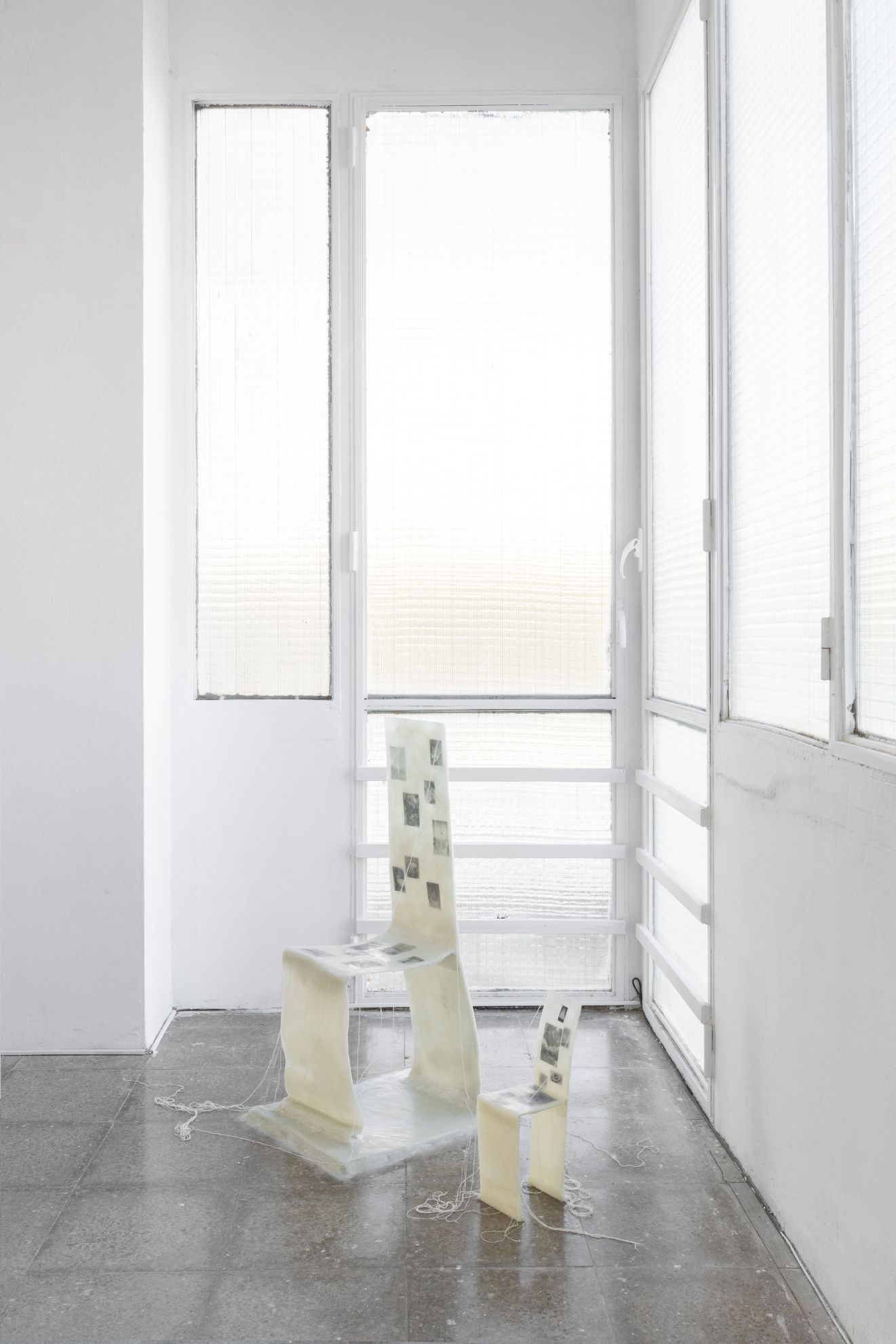

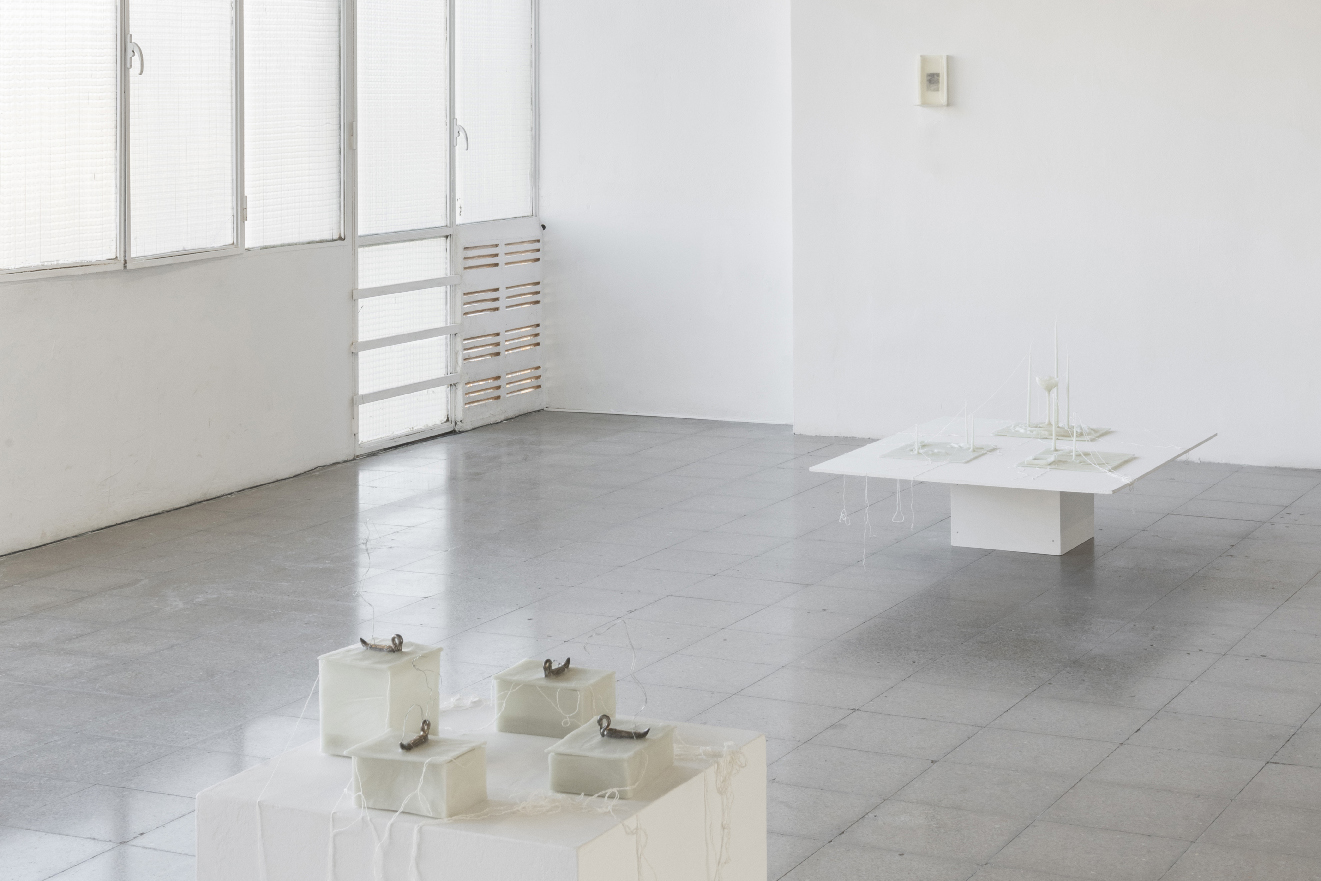
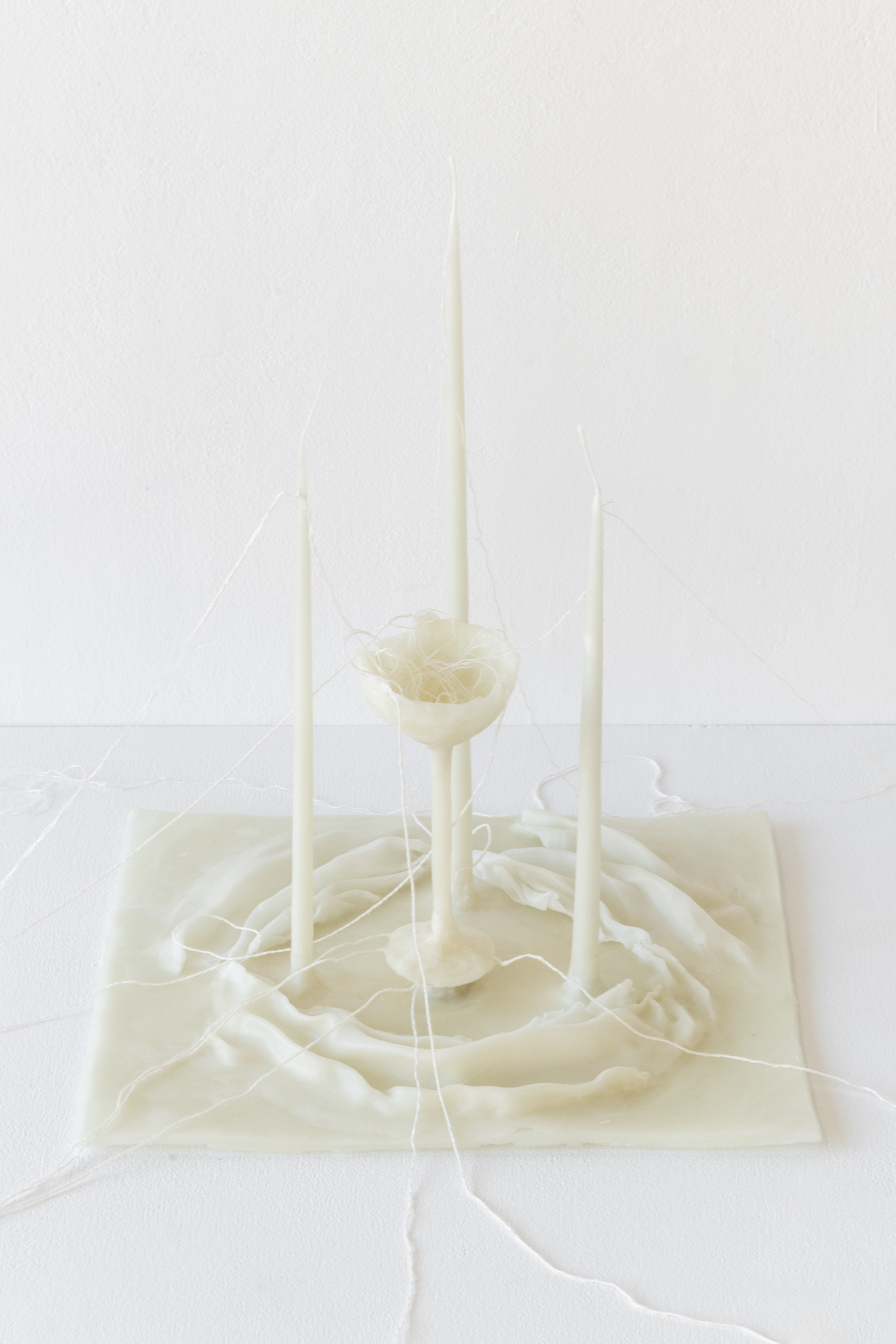

Esta exposición presenta las obras de cuatro artistas que susurran palabras al oído y nos invitan a incorporar formas desde la intuición.
Unen sus silencios para mostrar aquello que las palabras, en el mejor de los casos, solo pueden acompañar amablemente, pero nunca determinar. En este orden del arte, las obras de Manuel Brandazza, Daniel Leber, Krystel Cárdenas y Laura Zuccaro se repliegan sobre sí mismas y meditan para expulsar después su aura sacral.
En lo natural de su existencia, lo no dicho se vuelve belleza como un gesto primigenio o en la aparición del brillo de una escama hecha perla. La tarea realizada en silencio da placer sin decir nada. En las obras el tiempo es como un esquema que aparece en la materia, en el trazo, en la suspensión del aire de la habitación.
El tiempo también sobrevive en muchas dimensiones: conviven las distintas versiones de él dentro del vientre de las obras. El instante de esta exposición se hace permanente en lo productivo que se infiltra en el tiempo del sueño y conecta la realidad con lo onírico. El niño pregunta “Mami, ¿qué sueñas?” y la madre responde: “A veces, que llego tarde”. La pregunta inmediata es “¿a dónde?” y la respuesta es: “a ningún lugar”.
La infancia también tiene otro tiempo, el de los sentidos y el descubrimiento, el tiempo que camina más al ras del suelo y mira desde abajo el hueco que esconden las cosas, el de las preguntas, que necesitan una respuesta pero que de tanto en tanto, es imposible dar y entonces, lo mejor, es la simpleza.
Esta exhibición se aleja del espectro de la autoría, no tiene afán de originalidad, sino de conexión con lo que ya conocemos pero de una forma diferente.
***
Unen sus silencios para mostrar aquello que las palabras, en el mejor de los casos, solo pueden acompañar amablemente, pero nunca determinar. En este orden del arte, las obras de Manuel Brandazza, Daniel Leber, Krystel Cárdenas y Laura Zuccaro se repliegan sobre sí mismas y meditan para expulsar después su aura sacral.
En lo natural de su existencia, lo no dicho se vuelve belleza como un gesto primigenio o en la aparición del brillo de una escama hecha perla. La tarea realizada en silencio da placer sin decir nada. En las obras el tiempo es como un esquema que aparece en la materia, en el trazo, en la suspensión del aire de la habitación.
El tiempo también sobrevive en muchas dimensiones: conviven las distintas versiones de él dentro del vientre de las obras. El instante de esta exposición se hace permanente en lo productivo que se infiltra en el tiempo del sueño y conecta la realidad con lo onírico. El niño pregunta “Mami, ¿qué sueñas?” y la madre responde: “A veces, que llego tarde”. La pregunta inmediata es “¿a dónde?” y la respuesta es: “a ningún lugar”.
La infancia también tiene otro tiempo, el de los sentidos y el descubrimiento, el tiempo que camina más al ras del suelo y mira desde abajo el hueco que esconden las cosas, el de las preguntas, que necesitan una respuesta pero que de tanto en tanto, es imposible dar y entonces, lo mejor, es la simpleza.
Esta exhibición se aleja del espectro de la autoría, no tiene afán de originalidad, sino de conexión con lo que ya conocemos pero de una forma diferente.
***